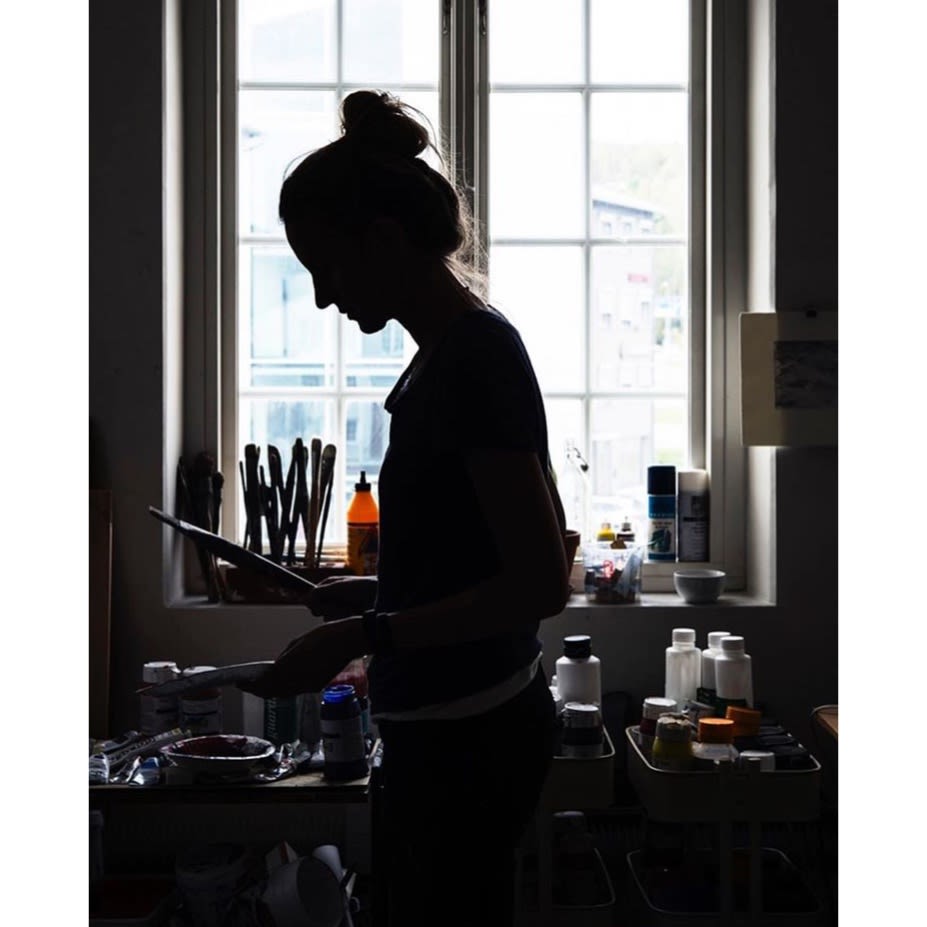Jenny Lundgren is a contempory painter living and working between Örnsköldvik, Sweden and Vienna, Austria. Jenny attended Ålsta Art School and holds a Masters of Fine Arts from the University of Applied Arts, Vienna. Jenny has held a number of solo and group shows in Sweden, Austria, Melbourne and Denmark, with her works housed in collections worldwide.
OTOMYS: You have previously described how your works draw upon figuration, despite being largely abstract. How do you build abstraction around figuration?
Jenny Lundgren: The role of figuration in my paintings has changed over the years. Nowadays figurations serves as a base for my paintings, behaving as a starting point that I build on freely and intuitively. I reduce, simplify and react on what is happening in the painting while I work. I am interested in exploring how the colours, shapes and layers influence each other. The unique relationships between formal elements can produce such exciting results. So, I do work with abstraction but I don’t consider myself as an abstract painter, since the underlying idea of a figurative composition plays an important role to me when I work.
OTOMYS: What images do you reference when creating this figurative layer?
Jenny Lundgren: Ever since I started painting I’ve been fascinated by traditional genres such as portraiture, still-life and landscape painting. I’ve always felt a connection to these works and the often simple and idealised observations of the world they offer. Over the years I have developed an extensive collection of images, many of which I have taken myself, that capture the beauty of everyday people and objects. In the past, these images worked as templates for my paintings, directly transposed to the surface. Nowadays, however, these images act as inspiration for more complex and creative compositions, informing the painting indirectly. I don’t look at them so often now. Overtime these images have become imprinted on my mind, and I can paint them without a literal reference. If I find myself in a creative rut I often return to these drawings. They hold so many answers, from different colour combinations to mood. I try to see these images in a different way every time I look at them; I might focus on the space in between, the reflections or the shadows and suddenly an old image that I have seen many times will speak to me in a new and interesting way.
OTOMYS: Your paintings have the most evocative and rhythmic colour combinations. How do you use colour to communicate these moods and emotions?
Jenny Lundgren: I am interested in the relationship between colour and how their different qualities inform this interaction. I believe that form and colour work hand in hand; a certain shape often necessitates a particular colour. If I change even the smallest element, the whole painting changes. As a result, my approach to colour is very wholistic. I respond to how colours work together on the canvas, listening to the story that they tell as a whole. I often work with layers, with some of them more transparent than others. I want the process of painting to stay visible, which often includes the texture of the linen. I also build up certain areas with more pigment, creating different textures that change the properties of the colour. I also find it interesting to work with the qualities of the colour. For example, using the warm and cold nuances of the colours to create a sense of depth and spatial distance.
OTOMYS: What plans do you have for the rest of the year? How do you see your practice evolving?
Jenny Lundgren: My plan for this year is simply to keep working, keep painting, keep the consistency. To keep the process going and stay curious about where it will take me, the more I paint, the more I want to paint and it is in the working process that new ideas come to me.
Jenny will be exhibting new works later this year in Otomys' summer group show, wonder land. For more information about Jenny's available works please contact info@otomys.com.
August 9, 2023



